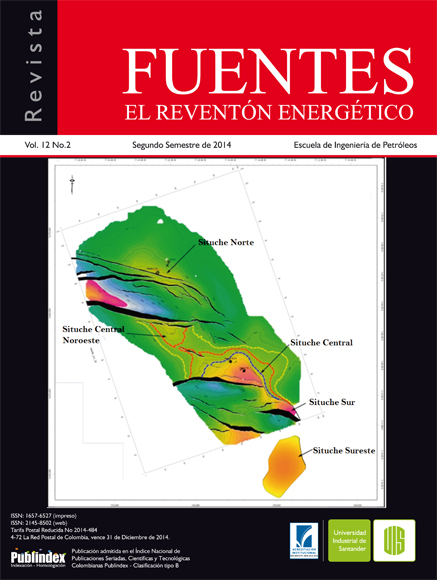REACTORES DE LECHO FLUIDIZADO Y LECHO BURBUJEANTE EN LA GASIFICACIÓN DE BIOMASA RESIDUAL
Published 2015-06-05
How to Cite
Abstract
RESUMEN
El tratamiento de la biomasa residual con fines energéticos es un tema de interés para la conservación del ambiente y el aprovechamiento de la energía. Dentro de las tecnologías avanzadas de depuración, los procesos hidrotérmicos han despertado un gran interés por su eficacia en la destrucción/eliminación de vertidos residuales de alta carga orgánica. Es por ello la relevancia de modelar reactores que permitan la reacción de gasificación, como el de lecho fluidizado y lecho burbujeante, específicamente a través del porcentaje en peso de gas producido como el tamaño de partícula de la biomasa alimentada en función de la temperatura, usando como alimentación aserrín de pino (Pinus arizonica Engelm), comparando estos resultados con los obtenidos experimentalmente. Se obtuvo que el aumento de la temperatura incrementó la producción de hidrógeno y metano con una desviación porcentual promedio de 1,69%. Además, el porcentaje en peso de hidrógeno y metano disminuyó a medida que el tamaño de partícula de la biomasa alimentada se incrementó en el reactor de lecho fluidizado, tendencia que se acentúa en el reactor de lecho burbujeante. Se transformó la biomasa residual en gases combustibles como hidrógeno y metano en proporciones comparables en el reactor de lecho fluidizado y el de lecho burbujeante. Palabras Claves: Proceso hidrotérmico, aserrín de pino, reactor lecho fluidizado, reactor lecho burbujeante, metano e hidrógeno.
REACTORS FLUIDIZED BED AND BUBBLY IN RESIDUAL BIOMASS GASIFICATION
ABSTRACT
The treatment of residual biomass for energy is a topic of interest for environmental conservation and energy efficiency. Within the advanced treatment technologies, hydrothermal processes have attracted considerable interest because of its efficacy in the destruction / disposal of waste discharges of high organic load. Is therefore the importance of modeling reactors which allow the gasification reaction, such as fluidized bed, bubbling bed, specifically through the weight percent of produced gas as the particle size of the biomass supplied in function of temperature, using as food pine sawdust (Pinus arizonica Engelm), comparing these results with those obtained experimentally. Was obtained that the increase in temperature increased the production of hydrogen and methane with an average percentage deviation of 1.69%. Furthermore, the weight percentage of hydrogen and methane decreased as the particle size of the feed biomass increased in fluidized bed reactor, a trend is accentuated in the bubbling bed reactor. Residual biomass fuels became as hydrogen and methane gas at comparable rates in the fluidized bed reactor and the bubbling bed Keywords: Hydrothermal Process, pine sawdust, fluidized bed reactor, bubbling bed reactor, methane and hydrogen.
